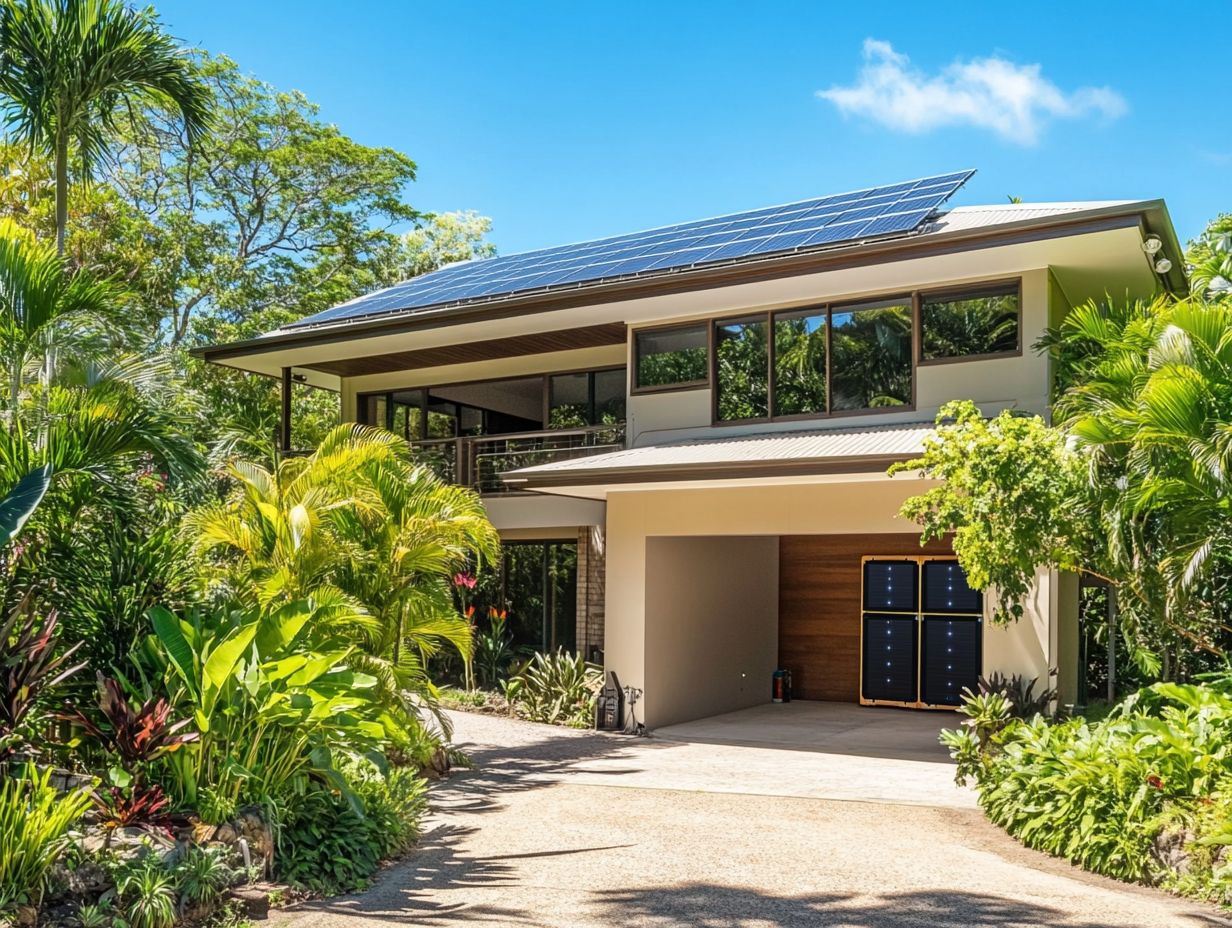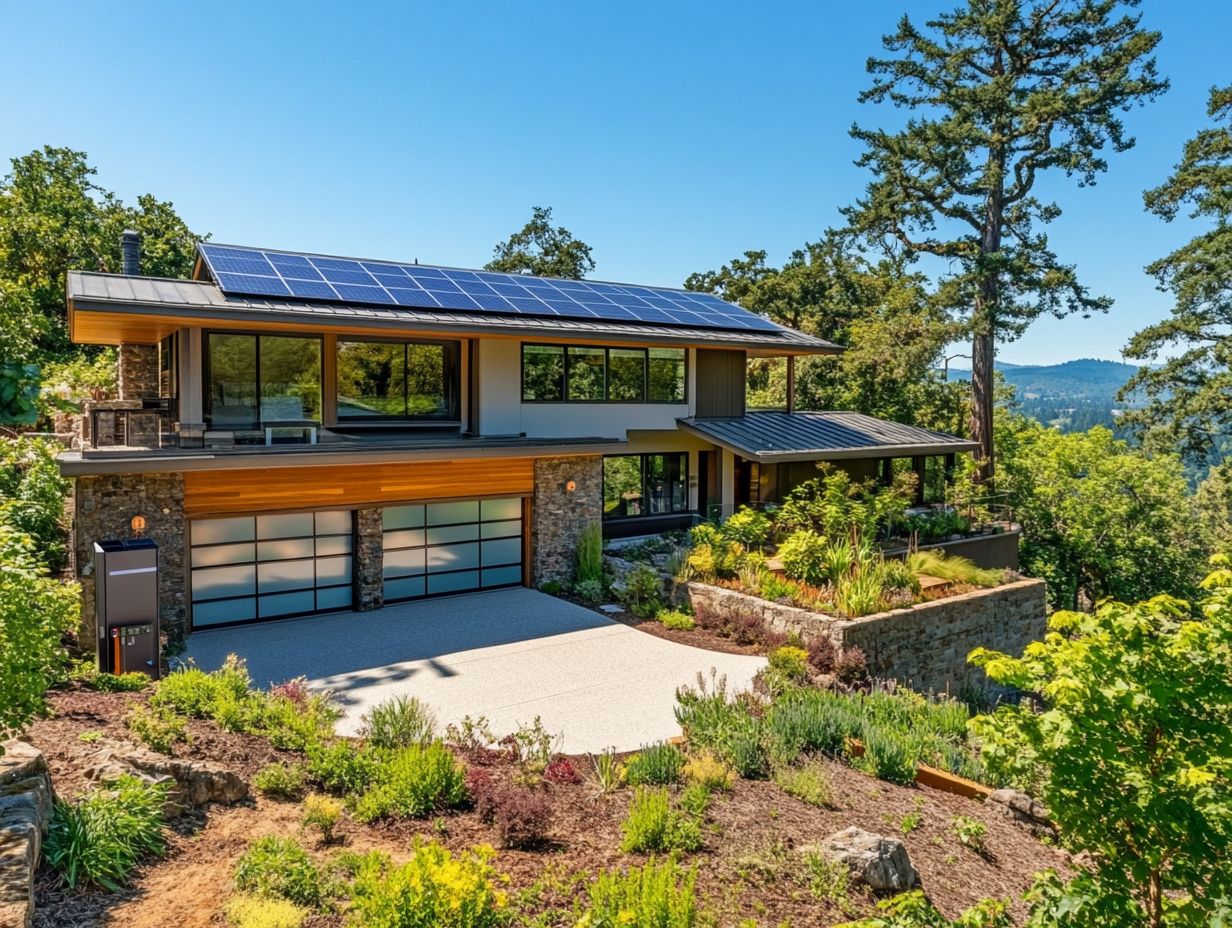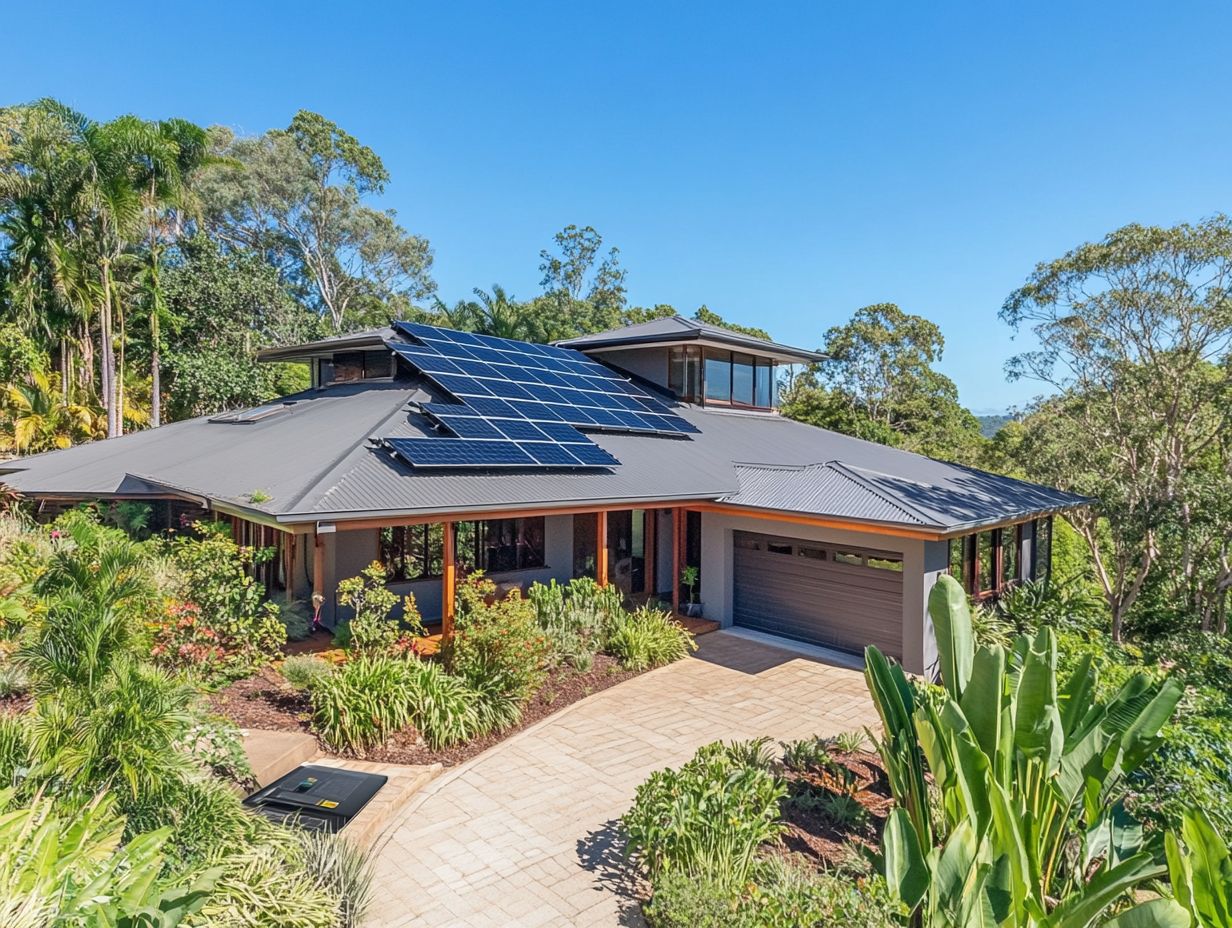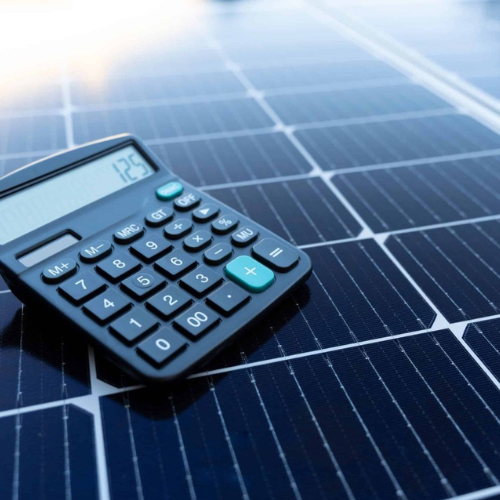Contents
- 1 Why Solar Batteries and Storage Solutions Matter
- 2 Different Types of Solar Batteries Available
- 3 Factors to Consider When Choosing a Solar Battery
- 4 Installation and Maintenance Considerations for Solar Batteries
- 5 Other Storage Solutions for Solar Energy
- 6 Frequently Asked Questions (FAQs)
- 6.1 What are solar batteries and storage solutions for homes?
- 6.2 Why should I invest in solar batteries and storage solutions for my home?
- 6.3 How do solar batteries and storage solutions work?
- 6.4 What types of solar batteries are available for homes?
- 6.5 How do I choose the right solar battery and storage solution for my home?
- 6.6 Can I install solar batteries and storage solutions on my own?
Why Solar Batteries and Storage Solutions Matter

Integrating solar batteries into your home energy setup can lead to energy independence, cutting down your carbon footprint, boosting your energy resilience, and increasing your energy security.
With the right storage options, you can really optimize the efficiency of your solar power and enjoy some nice savings on your energy bills—all while doing your part for a more sustainable future and reducing your environmental impact.
Plus, these technologies provide backup power during outages, encourage you to use renewable resources, and support energy resilience, which is a win-win for both you and the planet.
U.S. Department of Energy (DOE). (2021). Solar Energy Technologies Office: Funding Opportunities. Link
Understanding Renewable Energy
Renewable energy is all about tapping into natural resources that are constantly being replenished, contributing to energy diversification. Think of solar power systems, which use photovoltaic cells to turn sunlight into electricity, providing clean energy solutions. This sustainable energy approach not only helps you cut down on fossil fuel dependency but also plays a key role in reducing greenhouse gas emissions, addressing climate change, and promoting energy transition.
You’ll find that renewable resources include a bunch of different technologies, like wind, hydro, and geothermal energy, as well as home solar solutions, all working together to create a more sustainable energy landscape.
Photovoltaic technology really shines here because it can capture the sun’s abundant energy and transform it into usable electrical power through some pretty cool processes, enhancing solar performance. The efficiency of these solar power systems and solar panel efficiency keeps getting better, giving you and others cleaner energy options that can noticeably reduce energy bills over time.
As the global need for clean energy keeps rising, it’s clear that embracing renewable sources—especially solar energy and renewable technology—is crucial for a sustainable future.
Different Types of Solar Batteries Available
When you’re looking at solar batteries, you’ll find a few different types out there, with lithium-ion and lead-acid being the most popular choices for residential solar setups and distributed energy resources.
It’s really important to understand the differences between these battery types because picking the right energy storage solution for your home can make a big difference in power efficiency.
Key factors to consider include battery capacity, lifespan, and management systems, which significantly influence performance.
Lead-Acid Batteries
Lead-acid batteries are among the oldest and most widely used types for energy storage, especially in off-grid systems and backup power setups, crucial for grid independence. If you’re looking for an affordable option to boost your home energy solutions and achieve utility savings, these batteries can be a reliable choice. Just keep in mind that they do have some limitations when it comes to battery lifespan and maintenance.
You’ll often find these batteries being favored for things like uninterruptible power supplies (UPS), renewable energy systems, and electric vehicles because of their durability and cost-effectiveness, influencing energy costs.
However, their heavier weight and lower energy density compared to newer technologies like lithium-ion might make you think twice, especially for mobile applications.
To get the most out of your lead-acid batteries, regular maintenance is key to optimizing energy solutions. This includes keeping an eye on fluid levels and following proper charging practices to maximize their life and performance, ensuring energy efficiency.
Despite their quirks, lead-acid batteries can still be a reliable choice for those seeking affordable and efficient energy solutions, contributing to sustainability.
Advantages of Lithium-Ion Batteries
Lithium-ion batteries are really becoming the go-to option for solar energy storage, and it’s easy to see why, especially in residential energy systems. They pack a high energy capacity and are highly efficient compared to other battery types, making them ideal for energy optimization.
Plus, they offer a longer cycle life and need less maintenance, making them a solid choice if you’re looking to get the most out of your solar power system and maximize solar incentives.
Their lightweight design makes them portable, so you can install and integrate them into various energy setups without breaking a sweat, supporting smart homes.
Unlike those old-school lead-acid batteries that tend to wear out quickly and require constant replacements, lithium-ion batteries promise much greater longevity, helping you save on long-term investment costs.
They also perform well across a wider temperature range, which means you get consistent energy output even when the weather isn’t cooperating, crucial for energy resilience.
With all these benefits, lithium-ion batteries aren’t just a choice; they’re a smart investment for anyone serious about sustainable energy solutions and solar innovations.
Factors to Consider When Choosing a Solar Battery

When you’re choosing a solar battery, there are a few important factors to consider that can really shape your energy storage experience and influence your solar investment.
Think about things like battery capacity, cycle life, warranty options, and efficiency ratings. These factors will guide you in finding the perfect battery for your home energy needs and help you get the best bang for your buck, optimizing energy production and energy usage.
Capacity and Efficiency
Battery capacity is a big deal when it comes to how well your solar batteries perform, impacting energy management. It basically decides how much energy you can store and use during those peak demand times, essential for load shifting. The higher the capacity, the better your energy efficiency, which means you can really make the most out of your energy storage system, manage your energy output like a pro, and enhance power quality.
This isn’t just important for individual households; it is important not only for individual households but also for larger energy management systems, supporting effective system integration. Optimizing battery capacity can lead to some serious cost savings, energy rates reduction, and even help with grid stability.
For example, when your energy storage systems have a higher capacity, they can effectively capture all that extra solar irradiance generated on sunny days, reducing the chances of outages when demand is high.
Thanks to advancements in battery technology, like lithium-ion batteries, you get to enjoy lower self-discharge rates. That means you can use your stored energy even days after it was collected, enhancing energy security. By integrating smart energy management practices, you’ll be able to keep an eye on your consumption patterns, which can lead to even more improvements in your overall system performance and efficiency, supporting smart grid initiatives.
Cycle Life and Warranty
The cycle life of a battery is all about how many times it can charge and discharge before it starts to lose its oomph, affecting energy alternatives. This is super important when you’re looking at solar batteries and planning capacity. By understanding the cycle life, along with warranty options, you can make smart decisions about your energy storage investments and even hunt for those sweet financial incentives like the solar investment tax credit.
This knowledge becomes even more crucial as you work to maximize your use of renewable energy while keeping costs down and reducing maintenance costs. A higher cycle life usually means the battery will last longer and be more reliable, so you can count on it to perform well over time and stay a cost-effective choice, contributing to long-term investment.
Warranty options provide a safety net, offering peace of mind against unexpected issues while demonstrating the manufacturer’s confidence in their product’s durability and efficiency. As you check out different energy storage solutions, consider how these factors will affect your return on investment and utility savings. Pairing efficiency with available tax credits and rebates can really boost your financial savings and encourage solar financing.
Wood, D. L., Li, J., & Daniel, C. (2015). Prospects for reducing the processing cost of lithium ion batteries. Journal of Power Sources, 275, 234-242. Link
Installation and Maintenance Considerations for Solar Batteries
Getting your solar batteries installed properly and keeping up with regular maintenance is super important for making sure your solar energy storage setup performs at its best, lasts a long time, and reduces installation costs.
Whether you’re thinking about installing solar panels or you already have a system up and running, knowing the best practices for battery installation and maintenance can really boost your energy efficiency, storage capacity, and solar technology.
Proper Installation Techniques
When you’re installing solar batteries, using the right techniques is key to ensuring that your solar energy storage system operates efficiently and safely, ensuring energy conversion. You’ll want to get a good grasp on the roles of important components like inverters and charge controllers, which are essential for integrating the batteries with your solar panel setup, optimizing power storage.
Taking the time to position the batteries correctly and double-check that all the electrical connections are secure can really boost your system’s overall performance, crucial for ensuring optimal performance of your solar energy storage setup. The inverter acts as the middleman, converting the direct current from your batteries into alternating current for your home, enhancing home electrification. Meanwhile, the charge controller keeps a close eye on the energy flow, preventing overcharging or depletion, crucial for power quality.
It’s super important for you and any technicians involved to get familiar with these components, facilitating system integration. Their smooth operation is what makes your solar battery setup successful, ensuring you get optimal energy use, extend the lifespan of the system, and enhance energy demand response.
Maintenance Tips for Optimal Performance

Regular maintenance is essential for getting the best performance out of your solar batteries and ensuring battery recycling. If you neglect this part, you might end up with decreased efficiency, higher energy usage, and a shorter lifespan for those batteries.
Establishing a comprehensive battery management system can greatly assist in monitoring performance and make sure your home energy storage solutions, incorporating advanced battery technology, are working like they should.
To maintain your batteries, you’ll want to regularly check the state of charge and temperature, and keep an eye on the overall health of the system. A battery management system can handle these checks for you automatically, giving you real-time data on battery capacity and energy efficiency so you can jump in and make adjustments when needed.
Also, make sure your connections are clean and secure; this will prevent energy loss and boost your system’s reliability, contributing to better solar panel efficiency and renewable energy utilization.
By following these practical maintenance tips, you can substantially enhance the lifespan of your batteries and ensure that your solar power systems, including photovoltaic systems, keep running smoothly and efficiently over time.
Other Storage Solutions for Solar Energy
Along with solar batteries, you’ve got a whole range of residential energy storage solutions for solar energy at your fingertips, including grid-tied and off-grid systems.
These energy storage solutions facilitate achieving grid independence and give you the power to manage your energy output alongside the utility grid, making sure you have a stable and reliable power supply when you need it, particularly during power outages and peak demand times.
Grid-Tied Systems
Grid-tied systems are your ticket to connecting directly with the utility grid. This means you can pull power from the grid when you need it and send any excess energy back into it, utilizing net metering for optimal utility savings. It’s like having your cake and eating it too!
Not only does this setup boost your solar energy storage capabilities and energy management, but it also opens the door to benefits like net metering, which can really help trim down those energy bills and maximize efficiency ratings.
These systems work by synchronizing the output of your solar panels with the electricity grid, ensuring energy flows smoothly between the two, leveraging smart grid technology. When your solar panels produce more energy than your household uses, the surplus automatically gets sent to the grid. In return, you earn credits that can offset your future energy consumption. This handy relationship helps you manage your energy efficiently, allowing you to lean on renewable resources while still having access to traditional power when you need it.
Plus, grid-tied systems are a big win for your sustainability goals and can boost your energy independence, reducing your environmental impact. It’s a smart choice for anyone looking to make a positive impact on the environment and contribute to climate change mitigation.
Off-Grid Systems
Off-grid systems give you a totally independent source of power, using solar energy storage and home battery systems so you can operate without leaning on the utility grid. This setup not only offers you energy independence but also allows you to make use of renewable energy certificates to embrace sustainable energy practices, thereby enhancing your energy resilience.
By harnessing solar panels to catch sunlight, these systems convert that energy into electricity, which gets stored in robust battery banks for those non-sunny days or nighttime, thanks to efficient energy conversion processes. This means you can generate and store your own energy, cutting down your reliance on fossil fuels and boosting your overall sustainability.
Not only will you see your utility bills drop and energy costs minimize, but adopting off-grid solutions also puts you in the driver’s seat of the energy market while helping you shrink your carbon footprint. Plus, integrating renewable energy certificates gives you an extra nudge to make the switch to greener energy, fostering a more eco-conscious approach to how you consume power.
Frequently Asked Questions (FAQs)
What are solar batteries and storage solutions for homes?

Solar batteries are rechargeable units that store excess energy from solar panels for later use, enhancing home energy security. Storage solutions for homes refer to the various ways to store and use that energy efficiently, enhancing energy security.
Why should I invest in solar batteries and storage solutions for my home?
Solar batteries and storage solutions can help you save money on your electricity bill by using the stored energy instead of purchasing it from the grid, especially during peak hours. They also provide backup power in case of power outages and reduce your carbon footprint, contributing to clean energy and renewable technology.
How do solar batteries and storage solutions work?
Solar batteries collect excess energy generated by solar panels and store it in a chemical form, utilizing advanced battery chemistry. When your home needs electricity, the battery releases the stored energy, and the inverter systems convert it to usable power.
What types of solar batteries are available for homes?
There are different types of solar batteries, such as lead-acid, lithium-ion, and saltwater. Lead-acid batteries are the most common and affordable, while lithium-ion batteries are more expensive but have a longer lifespan. Saltwater batteries are a newer technology with a longer lifespan and are environmentally friendly, offering potential for battery recycling.
How do I choose the right solar battery and storage solution for my home?
When choosing a solar battery and storage solution for your home, consider your energy usage, budget, and the type of solar system you have. It’s also essential to research and compare different brands and their features, including battery lifespan and efficiency ratings, to find the best option for your needs.
- Energy usage
- Budget
- Type of solar system
Can I install solar batteries and storage solutions on my own?
While it is possible to install solar batteries and storage solutions on your own, it’s recommended to hire a professional to ensure proper solar installation and connection to your home’s electrical system. This can also help you avoid any potential safety hazards and ensure the system is working efficiently, optimizing energy management and system integration.







